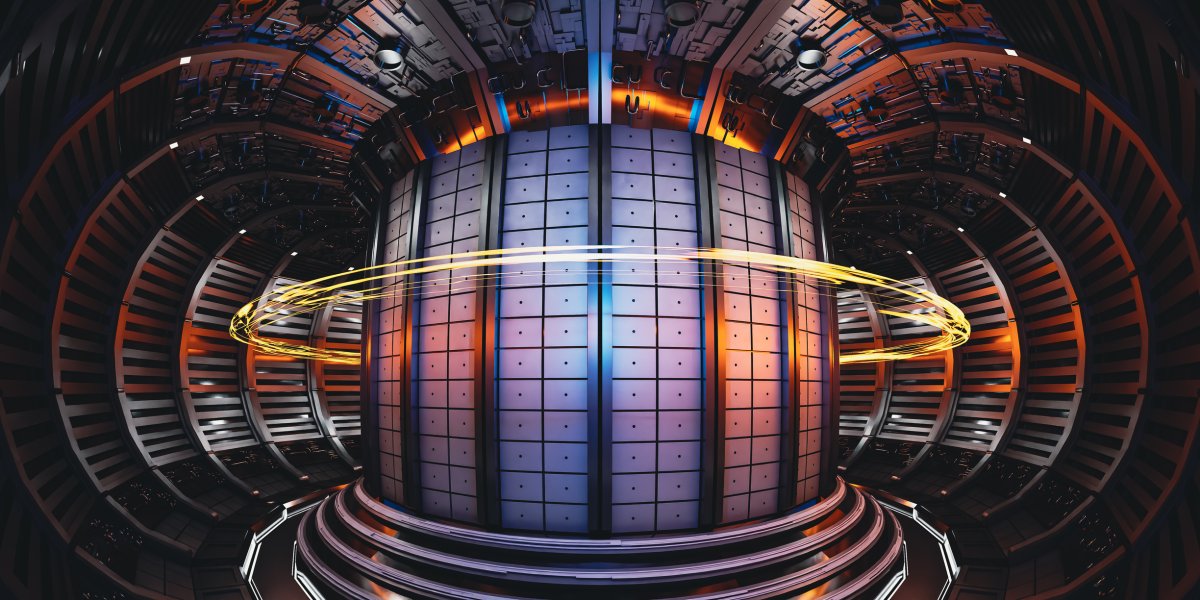Commercial fusion energy may be one step closer thanks to a recent development reactor design by researchers at Princeton's Plasma Physics Laboratory (PPPL). The researchers hope that their discovery will lead to smaller, less expensive fusion reactors in the future.
But first, what is fusion?
Nuclear fusion is a process that creates energy in the same way as our sun. It involves the smashing together of two atoms with such force that they combine into a single, larger atom, and release huge amounts of energy in the process.
Unlike nuclear fission—the nuclear reaction that is currently used in the energy sector—fusion promises not to create radioactive waste. It would produce three to four times more energy than fission and would not release carbon dioxide into the atmosphere like fossil fuels. Fusion is also a very fragile process that will shut down in a fraction of a second if the correct conditions are not maintained. Therefore, there would be no risk of nuclear meltdown from this reaction.

However, for it to take place, we need to be able to mimic the conditions at the center of the sun. And, unsurprisingly, that takes a lot of energy. In fact, to create this reaction on Earth, temperatures need to be at least six times hotter than the center of the sun!
Another issue is how to confine these superhot particles in a small enough space for them to easily bump into each other. And this is where research into nuclear fusion splits into two branches: lasers and magnetic confinement. In both cases, the atoms involved are heated to super-high temperatures and confined in a small area, which forces them to fuse.
At these temperatures, atoms exist in a state called a plasma, which is basically a soup of negatively charged electrons and positively charged ions that have been ripped apart by the extremely hot temperature of their surroundings. And it is this plasma that must be contained.
In the Princeton study, run on behalf of the U.S. Department of Energy, researchers used a device called a tokamak, a donut-shaped contraption that contains the plasma using strong magnetic fields.
"The purpose of these devices is to confine the energy," Dennis Boyle, a staff research physicist at PPPL, said in a statement. "If you had much better energy confinement, you could make the machines smaller and less expensive. That would make the whole thing a lot more practical, and cost-effective so that governments and industry want to invest more in it."
In today's tokamaks, the plasma can often become cooler towards its edges, losing energy and making the overall reaction less efficient. But now, the team at PPPL has discovered that a simple coating on the reactor's walls could help keep the plasma's edges hot. And this simple coating is liquid lithium.
"The results...have been very promising," Richard Majeski, managing principal research physicist at PPPL, said in a statement. "Liquid lithium not only provides a wall that can withstand contact with a 2 million-degree plasma, it actually improves the performance of the plasma."
According to the researchers, this coating also acts as a shield for the reactor's inner walls, reducing the need for repairs and maintenance.
But how does this lithium coating work? Well, inside the plasma, hydrogen ions—hydrogen atoms ripped of their electrons—are moving around at a rapid pace. Some of these can jump out of the plasma and stick the walls of the reactor. Without the lithium coating, these may be reflected back into the plasma, but only after a significant chunk of their energy has been absorbed by the vessel's walls. This, therefore, removes heat energy from the plasma.
What the lithium coating does is it reduces the amount of hydrogen that can bounce back into the plasma, absorbing around 40 percent of all the hydrogen ions that were able to escape.
"This work at Princeton shows that...an advantage might be obtained with a lithium wall," Amanda Quadling, director of materials research at the U.K. Atomic Energy Authority, told Newsweek. "The outcomes add real value to a community which must inevitably engage with lithium as the key fuel substrate."
However, Quadling added that lithium is not an easy element to work with. For one, using liquid lithium on the walls of a larger reactor would be difficult and expensive. Majeski echoed this sentiment, stating that smaller reactors may be required to successfully incorporate this technology: "In order to move confidently ahead with liquid lithium walls in a future phase of [our tokamak reactor,] exploratory experiments at a smaller scale are essential."
Do you have a tip on a science story that Newsweek should be covering? Do you have a question about nuclear fusion? Let us know via science@newsweek.com.
Uncommon Knowledge
Newsweek is committed to challenging conventional wisdom and finding connections in the search for common ground.
Newsweek is committed to challenging conventional wisdom and finding connections in the search for common ground.
About the writer
Pandora Dewan is a Senior Science Reporter at Newsweek based in London, UK. Her focus is reporting on science, health ... Read more
To read how Newsweek uses AI as a newsroom tool, Click here.








